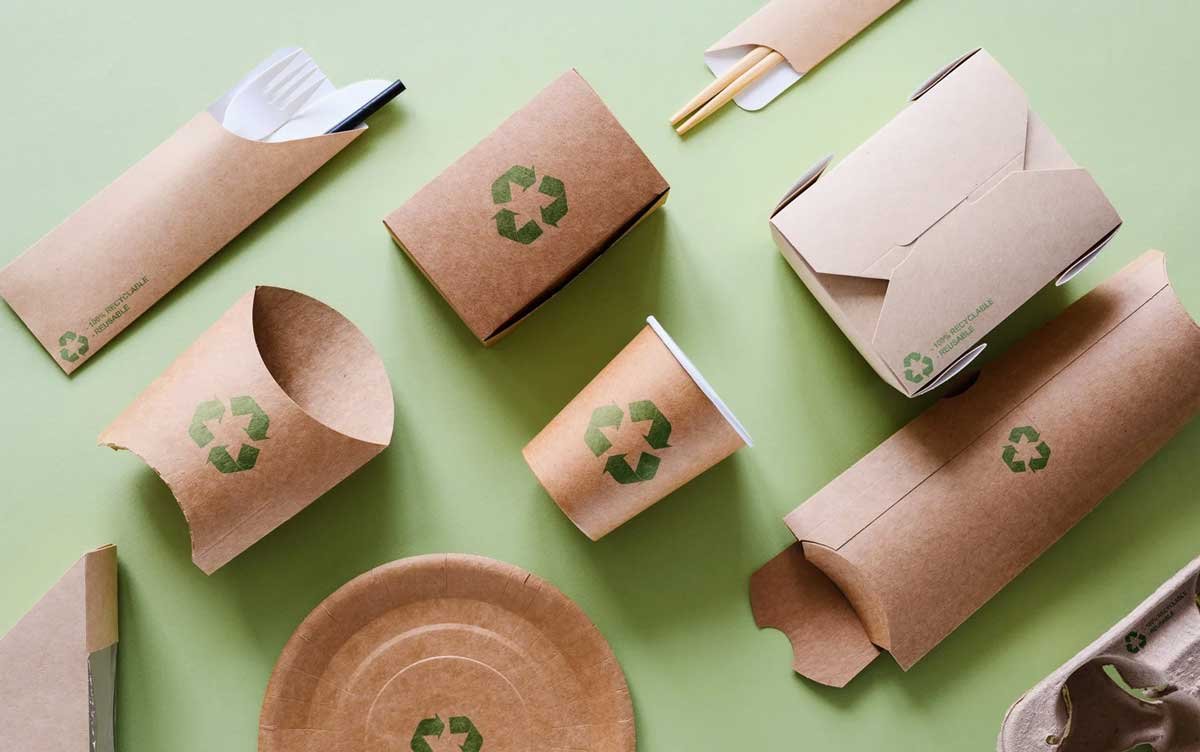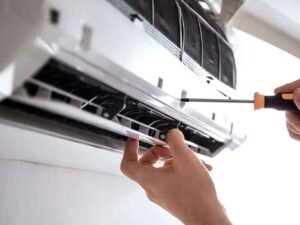Pappedeckel, which means “cardboard lid” in German, changes eco-friendly packaging in remarkable ways despite its simple look. These eco-friendly lids naturally decompose within weeks to months, unlike plastic alternatives that stay in landfills for centuries.
You’ll find pappedeckel everywhere in food and beverage culture, from busy coffee shops to traditional beer gardens. The practical design works well for both function and branding while keeping a substantially lower carbon footprint than synthetic materials. The eco-friendly packaging market grows 6–8% each year, and fiber-based lids like pappedeckel will see more demand.
This simple yet meaningful advancement changes our approach to packaging. It marks a crucial step toward sustainability as the industry looks for alternatives to plastic.
What is a Pappedeckel?
Pappedeckel means much more than a simple product in today’s green packaging world. This versatile item draws attention because it works well and helps the environment.
Definition and origin of the term
The German language gives us “pappedeckel” – a combination of “pappe” (cardboard) and “deckel” (lid). German speakers connect this word with coffee-to-go culture, sustainability, and everyday usefulness.
The story of pappedeckel started in early 20th-century Europe. Street food vendors and cafés just needed affordable ways to protect food and drinks during transport. The 1920s and 1930s saw cardboard lids replace heavy materials like wood and metal. This made takeaway items easier to carry. These early designs evolved into what we know as pappedeckel today.
How it differs from regular cardboard lids
A pappedeckel stands out from regular cardboard disks. These special lids measure between 1mm to 3mm thick. The material feels denser and smoother than shipping cardboard because manufacturers design it specifically for food and drinks.
The lids come from compressed layers of recycled or new fiber pulp. Wood from spruce or fir trees provides the raw material. Some lids stay untreated to decompose fully. Others get a light coating of water-resistant materials like starches or biodegradable waxes. This coating helps the lid stay intact when wet – perfect for coasters or coffee cup lids.
Where it is commonly used
Pappedeckels serve many purposes. People use them as:
- Coffee cup covers that keep drinks hot and prevent spills
- Lids for takeaway food boxes
- Coasters in cafés and beer gardens
- Covers for ice cream and dessert containers
You’ll find pappedeckels everywhere in Germany, Austria, and Switzerland – from busy coffee shops to traditional beer gardens. Bavarian beer culture uses these cardboard disks as coasters to catch condensation and protect tables. They even help communicate with staff – placing one on your beer shows you’ll return to finish your drink.
Bakeries love these lids too. They stack easily, weigh almost nothing, and don’t cost much. The staff uses them to cover pastries, soups, and takeaway meals.
From Utility to Culture: The Evolution of Pappedeckel
The rise of pappedeckel from a basic utility item to a cultural icon spans more than a century of innovation and change. This humble cardboard lid shows how consumer needs and technology have advanced through time.
Early 20th-century food service needs
Before the 1900s, food vendors used reusable containers made from wood, metal, or thick paper to transport food and beverages. These materials were either too expensive or impractical for single use. Street food culture boomed in early 20th-century Europe. Vendors needed affordable ways to protect their products. Cardboard became the perfect solution because it was light, cheap, and easy to mold into different shapes.
The 1920s and 1930s saw cardboard lids take over from heavier materials. This made takeaway food and drinks more convenient for customers. The change aligned with new developments in food service packaging after paper plates arrived in 1903 and disposable cups in 1908.
Post-war packaging boom
The packaging world changed after World War II. Cities grew bigger and takeaway culture exploded. People needed more disposable packaging solutions than ever. Companies stepped up with better mass production technologies. They made pappedeckels in larger quantities without compromising quality.
Advanced water-resistant coatings and die-cutting technology emerged in the mid-20th century. These changes made pappedeckels stronger and more useful. Companies started printing logos and brand messages on them instead of leaving them plain. Pappedeckels became powerful marketing tools.
Cultural significance in beer gardens and cafés
Pappedeckels gained unique cultural meaning beyond their practical use. Bavarian beer garden customers used them to communicate with staff. A pappedeckel placed over a beer meant the patron wanted to keep drinking.
These cardboard disks became symbols of cozy bakeries and busy coffee kiosks across German-speaking regions. Cafés decorated them with art, funny quotes, and seasonal messages. Simple drink protectors turned into collectible souvenirs. They became the unsung heroes at festivals and markets by keeping food and drinks clean.
How Pappedeckels Are Made
Pappedeckel manufacturing combines traditional papermaking with eco-friendly state-of-the-art techniques. The process needs specific materials and precise manufacturing methods that experts have refined over decades.
Materials used: SBS, kraft board, recycled fiber
Pappedeckel production relies on several raw material varieties that serve different purposes. Solid Bleached Sulfate (SBS) excels with its smooth surface and works perfectly for printing logos and designs. This premium paperboard grade comes from bleached virgin fiber and provides excellent food safety properties.
Kraft Board delivers strength with a natural-looking, often unbleached appearance. Recycled paperboard (also known as coated recycled board) puts post-consumer waste to good use and reduces virgin material needs.
Manufacturers choose virgin pulp board when they need extra durability and cleanliness, which becomes crucial for food applications. The thickness usually ranges between 1mm to 3mm.
Step-by-step manufacturing process
The process starts with raw paper pulp sourced from sustainably managed forests or recycled materials. Workers mix this pulp with water and binders to create a slurry.
The mixture gets pressed into sheets or directly into circular disks. The material then dries and sometimes undergoes heat-pressing to achieve rigidity. Precision die-cutting machines shape these materials into specific forms—usually circles for cups or rectangles for food trays.
Products that need moisture resistance receive coatings made from water-resistant starch, biodegradable waxes, or plant-based materials. Quality control teams check the finished lids before packaging them for distribution.
Food safety and regulatory compliance
Food-grade pappedeckels must follow strict safety standards. Most products comply with EU Food Contact Material regulations and contain no harmful chemicals that could transfer into consumables.
Companies use non-toxic inks to print logos and designs. Food-grade versions go through extensive testing to ensure they’re contaminant-free—a crucial requirement for items that directly contact food and beverages.
Why Pappedeckel Is Leading Sustainable Packaging
Environmental concerns have made pappedeckel a leader in environmentally responsible packaging solutions. This simple cardboard lid stands out among eco-friendly alternatives and tackles sustainability from multiple angles.
Biodegradability and compostability
Pappedeckels naturally decompose within weeks to months, while plastic lids remain in landfills for centuries. Uncoated versions break down even faster and blend back into natural cycles without leaving harmful residues. These lids can disintegrate in just weeks at composting facilities, and they don’t leave any microplastics behind.
Role in zero-waste and plastic bans
The EU’s Single-Use Plastics Directive has pushed more companies to adopt materials like pappedeckel. Cities that ban plastics now turn to these cardboard alternatives as compliant, eco-friendly options. The global zero-waste packaging market reached USD 2 billion in 2022, and experts predict an 8.8% annual growth through 2032.
Comparison with plastic, cork, and silicone lids
| Material | Environmental Impact | Biodegradable | Compostable | Recyclability | Common Uses |
|---|---|---|---|---|---|
| Pappedeckel | Moderate | Yes | Yes | High | Coffee lids, coasters |
| Plastic | High | No | Limited | Low | Fast food, cold drinks |
| Silicone | Very High | No | Yes | Excellent | Reusable lids |
| Cork | Moderate | Yes | Yes | Moderate | Eco coasters |
Recyclability and circular economy support
Pappedeckels’ paperboard composition makes them perfect for standard paper recycling. The recycling process remains simple: users remove food residue and place them in paper recycling bins, then mills transform them into new paper products. Each pappedeckel can go through the recycling process up to 7 times before its fibers become unusable.
Design innovations for eco-performance
Latest developments include food-safe edible cardboard, waterproof coatings that break down naturally, and temperature-sensitive printing that responds to heat. Manufacturers now use plant-based inks and dyes instead of petroleum-based options, which reduces toxic substances in production.
Conclusion
Pappedeckel leads the way in sustainable packaging solutions by balancing functionality with environmental responsibility. The simple cardboard lid has grown from its practical roots in early 20th-century Europe into a key player in today’s eco-conscious market. These fiber-based lids break down naturally within weeks or months, unlike plastic alternatives that last for centuries. This makes them a perfect choice for businesses that want to reduce their environmental impact.
Businesses across the globe see clear benefits in using pappedeckel. The biodegradable nature of these lids fits well with zero-waste initiatives and plastic ban regulations. The manufacturing process lets companies customize their products while staying environmentally friendly. Modern consumers prefer sustainable options that don’t give up convenience.
Pappedeckel means more than just environmental benefits, particularly in German-speaking regions. People use it as coffee cup lids and communication tools in beer gardens. This shows how environmentally responsible solutions can become part of everyday life without feeling forced.
The future looks bright for pappedeckel as sustainable packaging grows 6-8% each year. New developments like edible cardboard and waterproof biodegradable coatings show what a world of versatile products might look like. Combined with growing awareness about plastic pollution, pappedeckel represents more than just a trend – it marks a fundamental change in packaging philosophy.
Pappedeckel’s story reminds us that the best solutions often come from simple, well-designed products. This modest cardboard lid shows how we can match modern convenience with environmental care. It proves that sustainable choices work alongside practicality and cultural traditions.
FAQs
Q1. What is Pappedeckel and why is it gaining popularity? Pappedeckel is a German term for “cardboard lid” that’s becoming increasingly popular in sustainable packaging. It’s an eco-friendly alternative to plastic lids, biodegradable within weeks to months, and commonly used for coffee cups, takeaway containers, and as coasters in cafes and beer gardens.
Q2. How does Pappedeckel contribute to sustainable packaging? Pappedeckel is biodegradable, compostable, and recyclable, making it an excellent choice for sustainable packaging. It supports zero-waste initiatives, complies with plastic ban regulations, and has a significantly lower environmental impact compared to plastic alternatives.
Q3. What materials are used to make Pappedeckel? Pappedeckel is typically made from materials such as Solid Bleached Sulfate (SBS), kraft board, or recycled fiber. These materials are chosen for their strength, printability, and eco-friendly properties. The thickness usually ranges from 1mm to 3mm.
Q4. How does Pappedeckel compare to other lid materials? Compared to plastic, cork, and silicone lids, Pappedeckel offers a good balance of environmental benefits. It’s biodegradable and compostable like cork, highly recyclable, and has a moderate environmental impact. Unlike plastic, it doesn’t persist in landfills for centuries.
Q5. Are there any innovative designs in Pappedeckel production? Yes, recent innovations in Pappedeckel design include edible cardboard made from food-safe ingredients, biodegradable waterproof coatings, and temperature-sensitive printing that changes color with heat. Manufacturers are also exploring plant-based inks and dyes to further reduce environmental impact.










